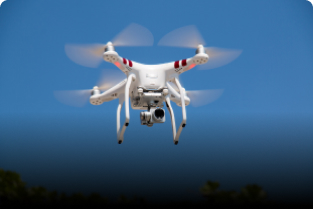Drones have become an indispensable part of modern technology, with applications ranging from photography and entertainment to logistics, agriculture, and even disaster management. But the most interesting drone engineering? That’s a question with a lot of answers. From futuristic designs to cutting-edge technology, let’s explore some of the most awe-inspiring drone innovations that have caught my attention.
1. The Vertical Take-Off and Landing (VTOL) Drones
One of the most captivating advancements in drone technology is the rise of VTOL drones. These drones combine the best of both worlds: the vertical take-off and landing capabilities of a helicopter, and the horizontal flight efficiency of an airplane.
Imagine drones that can take off and land in tight spaces without requiring a runway, while also covering long distances efficiently. They’ve found immense value in applications like military surveillance, search and rescue operations, and even urban air mobility (the idea of flying taxis). Companies like Joby Aviation and Vertical Aerospace are making strides in perfecting VTOL designs that could one day change the way we travel.
2. Swarming Drones: The Power of Many
Swarming drones might sound like something straight out of a sci-fi movie, but this technology is very real, and it’s quite mind-blowing. Essentially, these drones work together as a coordinated group to achieve complex tasks.
The engineering behind drone swarming involves intricate algorithms and advanced communication protocols that enable the drones to fly in sync without crashing into each other. This technology could revolutionize everything from agricultural monitoring to large-scale delivery systems, and it’s already being used in military applications for surveillance and tactical missions.
3. Solar-Powered Drones
Another fascinating development is the solar-powered drone, which could potentially stay airborne for weeks or even months, making it perfect for long-term monitoring projects like environmental surveillance, disaster response, and communications in remote areas.
One of the most impressive examples is the Solar Impulse 2, a solar-powered aircraft that completed a round-the-world flight in 2016. While not a traditional “drone” in the sense that it requires a pilot, its technological foundation has influenced the design of long-endurance drones, demonstrating how solar power can enable near-endless flight. For drones, this breakthrough could extend battery life dramatically, solving one of the key limitations of current models.
4. Self-Repairing Drones
What happens when a drone gets damaged mid-flight? Traditionally, it means the mission is over. But self-repairing drones are changing that. Engineers have begun experimenting with drones that can fix themselves in-flight using advanced materials or autonomous mechanisms.
For instance, the “morphing drone” concept focuses on flexible, adaptive drone designs that can “heal” cracks or damage by changing their shape or structure, effectively preventing failure mid-flight. This kind of technology opens up vast possibilities, particularly in dangerous environments like active volcanoes, the deep sea, or disaster zones, where quick repairs would be essential to the success of the mission.
5. Biomimicry Drones: Learning from Nature
Nature has been a rich source of inspiration for engineers, and biomimicry (the practice of drawing design ideas from biological systems) has given birth to some truly revolutionary drone concepts.
For example, the Festo Smart Bird and the Smart Insect are bio-inspired drones that mimic the flight mechanics of birds and insects. These drones are equipped with flexible wings that allow for graceful, natural flight, potentially opening up opportunities for drones to operate in tight spaces, like inside buildings or forests, with high maneuverability and low noise.
6. AI-Powered Autonomous Drones
Perhaps one of the most groundbreaking aspects of drone engineering is the integration of artificial intelligence (AI). Autonomous drones equipped with AI can navigate complex environments without human intervention, making them highly suitable for tasks that involve real-time decision-making.
For example, AI-powered drones are being used in precision agriculture, where they can autonomously monitor crop health, detect pests, and even distribute fertilizers with pinpoint accuracy. In the future, we may see AI-driven drones performing fully autonomous deliveries, inspecting infrastructure, or conducting complex research missions—all without any human input.
7. Underwater Drones (AUVs)
When we think of drones, we often picture them soaring through the sky, but underwater drones, or Autonomous Underwater Vehicles (AUVs), are equally fascinating and impactful. These drones are designed to explore the deep seas, where humans can’t easily go.
From mapping the ocean floor to conducting scientific research on marine life, AUVs are becoming invaluable tools for underwater exploration. Advances in engineering have made these drones more efficient, with longer battery lives, higher depth ratings, and more accurate sensors. Companies like Blue Robotics are pushing the limits of what these submersible drones can do.
In Conclusion: The Future of Drone Engineering
Drone engineering is an exciting and rapidly evolving field. With each new development, we see incredible improvements in flight capabilities, autonomy, and real-world applications. Whether it’s creating drones that mimic nature, harnessing solar power for long-duration flights, or developing swarms of drones that can perform complex tasks together, it’s clear that the future of drones is as thrilling as it is diverse.

